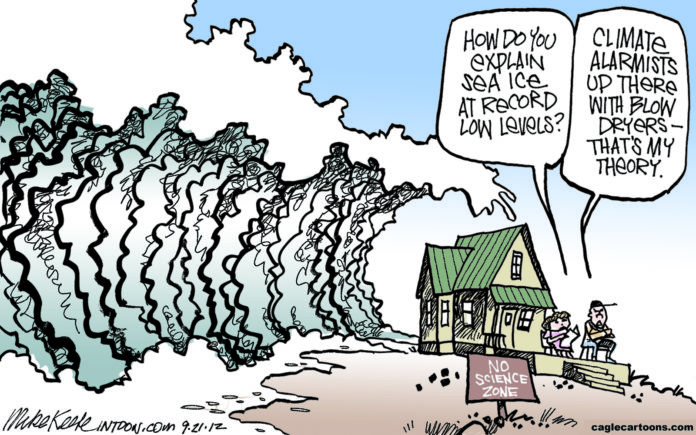BY RALPH NADER
 Dr. Barry Commoner, equipped with a Harvard PhD in cellular biology, used his knowledge of biology, ecosystems, nuclear radiation, public communication, networking scientists, political campaigning, and community organizing to become the greatest environmentalist in the 20th Century. He died on Sept. 30 at the age of 95, deeply involved in challenging conventional dogmas in the field of the genetic engineering.
Dr. Barry Commoner, equipped with a Harvard PhD in cellular biology, used his knowledge of biology, ecosystems, nuclear radiation, public communication, networking scientists, political campaigning, and community organizing to become the greatest environmentalist in the 20th Century. He died on Sept. 30 at the age of 95, deeply involved in challenging conventional dogmas in the field of the genetic engineering.
The range and depth of his work flowed from an integrative public philosophy of what makes the world work or not work in the interaction between what he called the “technosphere and the ecosphere.” His best-selling books were brilliant, clear and motivating.
In all the years I’ve known him, he maintained his methodical approach to analyzing problems and recommending superior strategies to achieve superior solutions. He kept his composure even in the most raucous public gatherings where others were arguing or shouting at one another. The mainstream media liked his calm demeanor, conveying a searing evaluation that went to the root causes of what and how we produce. He made the cover of Time magazine, as a symbol of the first Earth Day’s activities nationwide in April 1970, was a frequent guest of network TV shows and wrote for major publications such as the New York Times.
A fundamental inquirer, Commoner took on his fellow scientists who seemed indifferent to the nuclear arms race with the Soviet Union and the radioactive fallout from A-bomb testing. While working as, in the Times’ words, a “brilliant teacher and a painstaking researcher into viruses, cell metabolism and the effects of radiation on living tissue” at Washington University, he sparked the St. Louis Committee for Nuclear Information, which in turn mobilized enough scientists around the country to push for the nuclear test ban treaty that President John F. Kennedy proposed in 1963.
One of his “laws of ecology” is that “everything is connected to everything else,” and he wasn’t just referring to natural systems. Wars, corporate power and greed, injustice, discrimination and poverty connect to what makes people sick and die.
He declared that prevention, rather than wrangling over piecemeal regulation, was the most effective way to protect our air, water, soil and food. He pointed to lead in gasoline that was prohibited at long last, not gradually regulated. The banning outright of vinyl chloride was another example of prevention.
He told Scientific American: “What is needed now is a transformation of the major systems of production. … Restoring environmental quality means substituting solar sources of energy for fossil and nuclear fuels; substituting electric motors for the internal-combustion engine; substituting organic farming for chemical agriculture, expanding the use of durable, renewable and recyclable materials – metals, glass, wood, paper – in place of petrochemical products that have massively displaced them.”
He told me in the 1980s that he wanted to write a book about the necessity and practicality of replacing the petrochemical industry. Commoner urged the Department of Defense in detail to use solar technologies for economic and environmental reasons and thereby jumpstart an expanding civilian market for solar. The Navy, where he served in World War II, did install thousands of photovoltaics at remote locations to save money and cut pollution.
Procurement by government is a great stimulus to innovation and avoids the regulatory delays by corporate lobbyists.
Pollution in the workplace attracted his expertise when we needed it in pressing for the Occupational Safety and Health Act of 1970. When he brought poverty into his focus, he showed how impoverished racial minorities were exposed to higher intensities of polluting installations where they lived, due to their powerlessness. This “laid the groundwork for what later became known as the environmental justice movement,” as Professor Peter Dreier of Occidental College recently wrote.
Always the practical modern Renaissance man, Commoner helped start the Citizens Party in 1979 and was chosen as the party’s presidential candidate. He knew how Third Parties are structurally marginalized in the U.S., as compared with the Green Party in Germany, but he wanted to enlarge the public consciousness to connect causes and consequences.
He later joked about the time a reporter in New Mexico asked him: “Dr. Commoner, are you a serious candidate, or are you just running on the issues?” Too bad the media didn’t heed his clarion calls to action.
Unperturbed, Commoner applied his knowledge in many other directions, including a pioneering pilot recycling program in New York City, to show how most trash could actually be reused or recycled.
Today’s younger environmental activists hardly know of Commoner and his three great books – The Closing Circle [1971], The Poverty of Power [1976] and Making Peace With the Planet [1992], all of which remain unsurpassed and timely in their integrative frameworks for understanding and leveraged action.
I called Barry to congratulate him on his 90th birthday. “It happens,” he replied wryly. For the people, flora and fauna on the planet Earth, it is a great gift that Barry Commoner “happened.”
His students, supporters and some wealthy benefactors in this nation should extend his broad-gauged approach [“the finely-sculptured fit between life and its surroundings”] by establishing an Institute of Thought and Action in his name.
Those interested in this proposal should contact Barry’s former colleagues at Queens College or his widow Lisa Feiner.
Nader.org







